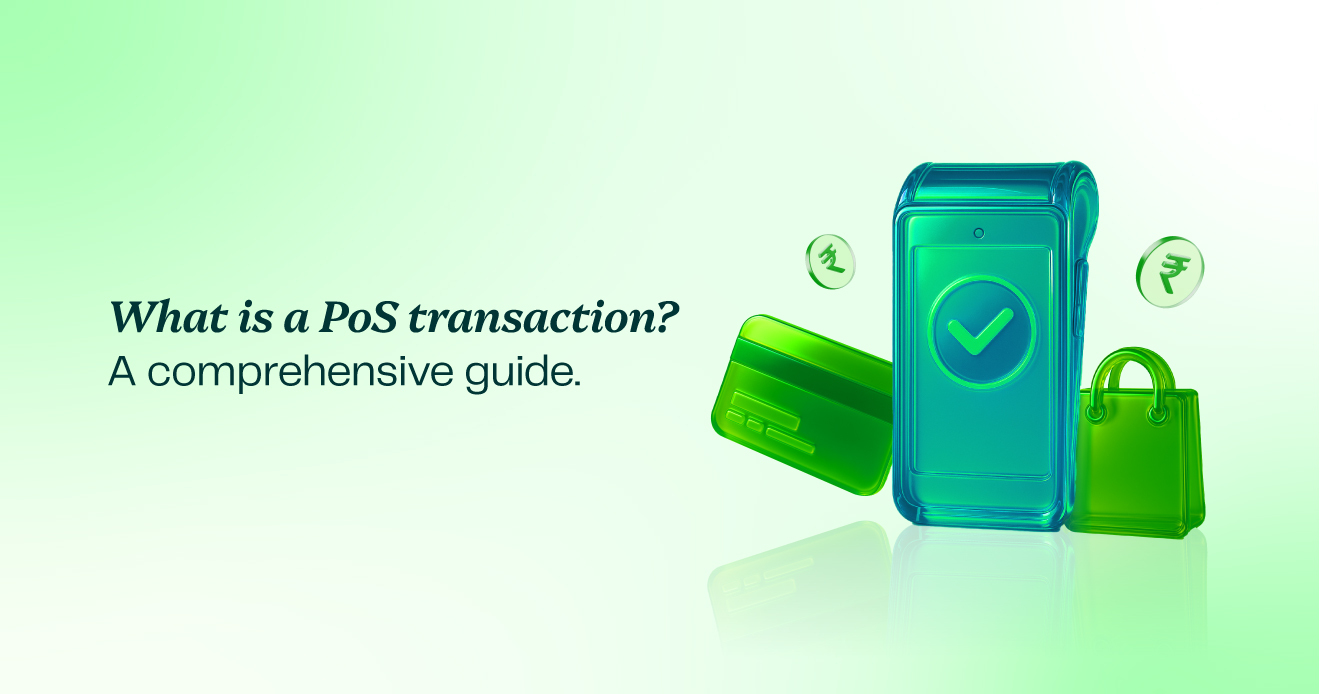Do you remember the days of cumbersome cash registers and scribbled receipts? Thankfully, those antique relics have been swept away by the accelerated Point-of-Sale (PoS) transactions. The modern business marketplace thrives on frictionless interactions and efficient exchanges.
PoS transactions have demonstrably transformed how businesses conduct sales, forging deeper connections with their customers. In the exponentially growing digital ecosystem, they are a crucial bridge between buyer and seller. They meticulously orchestrate seamless and secure payment processes.
Let’s explore PoS transactions, their definition, their purpose, and how they function in financial transactions.
What is a PoS transaction: Understanding definition and purpose
Definition: PoS, an acronym for Point of Sale, is the moment and place where a transaction is finalised between a merchant and a customer. Consequently, a PoS transaction is the exchange of goods and/or services for payment that occurs at the point of sale, often facilitated by electronic means.
Purpose: The primary purpose of a PoS transaction is to streamline the process of completing sales transactions efficiently and accurately. By integrating hardware and software systems, these transactions automate tasks such as inventory management, pricing calculations, and payment processing. They enhance the overall efficiency of retail operations.
What are the components of a PoS transaction?
Understanding a PoS transaction and its purpose will not suffice if you want to choose the best PoS machine for your business. You need to learn more about the components involved in a PoS transaction.
- Hardware components: PoS machines are equipped with various hardware components that are essential to their functionality. These components include cash registers, barcode scanners, card readers, and terminals. These components are essential for capturing transaction data and accelerating payment processing.
- Software components: PoS software is crucial in mobilising various aspects of the transaction process. From inventory management to sales analytics, PoS software enables merchants to manage their businesses effectively. Additionally, it interfaces with hardware components to execute transactions seamlessly.
- Payment processing: This is another critical component of PoS transactions, which enables merchants to accept various forms of payment. These may include credit cards, debit cards, mobile payments, and cash. Payment processors validate transactions, facilitate fund transfers, and ensure security compliance to safeguard sensitive financial information.
Now that you know what a PoS transaction is and its components, let’s learn how it works.
How does a PoS transaction work?
A PoS transaction manages how customers purchase goods and services in a retail establishment. It can occur in person or online, and receipts can be generated electronically or in print. Here is how a PoS transaction works:
- Initiating a transaction: The PoS transaction process begins when a customer selects items for purchase and proceeds to the checkout counter.
- Scanning items: The cashier scans the items using a barcode scanner, which retrieves product information and pricing from the inventory database.
- Totalling the purchase: The PoS machine aggregates the prices of all scanned items to calculate the total purchase amount, which includes applicable taxes and discounts.
- Selecting payment method: The customer selects their preferred payment method, whether it be credit/debit card, cash, or mobile payment.
- Payment authorisation: If the chosen payment method involves electronic authorisation, such as credit/debit cards, the PoS machine communicates with the payment processor to authorise the transaction.
- Transaction completion: Upon successful authorisation, the transaction is finalised, and the customer receives a receipt as proof of purchase.
- Inventory update: Simultaneously, the PoS machine updates the inventory database to reflect the deducted stock levels of the purchased items.
Are there any security considerations when making PoS transactions?
While PoS transactions offer convenience and efficiency, they also present security challenges that must be addressed to mitigate risks. These may include data breaches and fraud. Key security measures include:
- Encryption: By encrypting sensitive data such as payment card information during transmission and storage, it can be safeguarded from unauthorised access.
- Tokenisation: Substituting sensitive data with non-sensitive tokens reduces the risk associated with storing payment information.
- PCI compliance: Adhering to Payment Card Industry Data Security Standard (PCI DSS) requirements ensures that merchants maintain secure payment environments.
- Regular audits: Conducting periodic security audits empowers merchants to identify vulnerabilities and implement vital safeguards to protect against threats.
Make the most of PoS transactions with Pine Labs
Now that you have enough knowledge about PoS transactions, make the most of it. PoS transactions are fruitful for both businesses and customers, enhancing sales with credit plans. It’s time to maximise the use of a PoS system-apart from collecting money from customers, use it for inventory management, sales tracking, and customer relationship building.
Explore our website to find the most suitable PoS system or terminal for your business.

